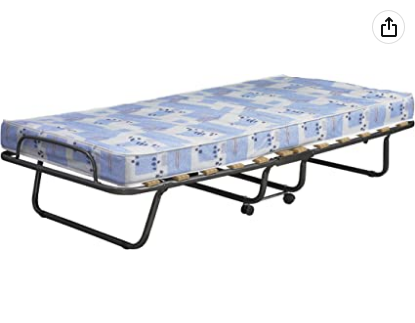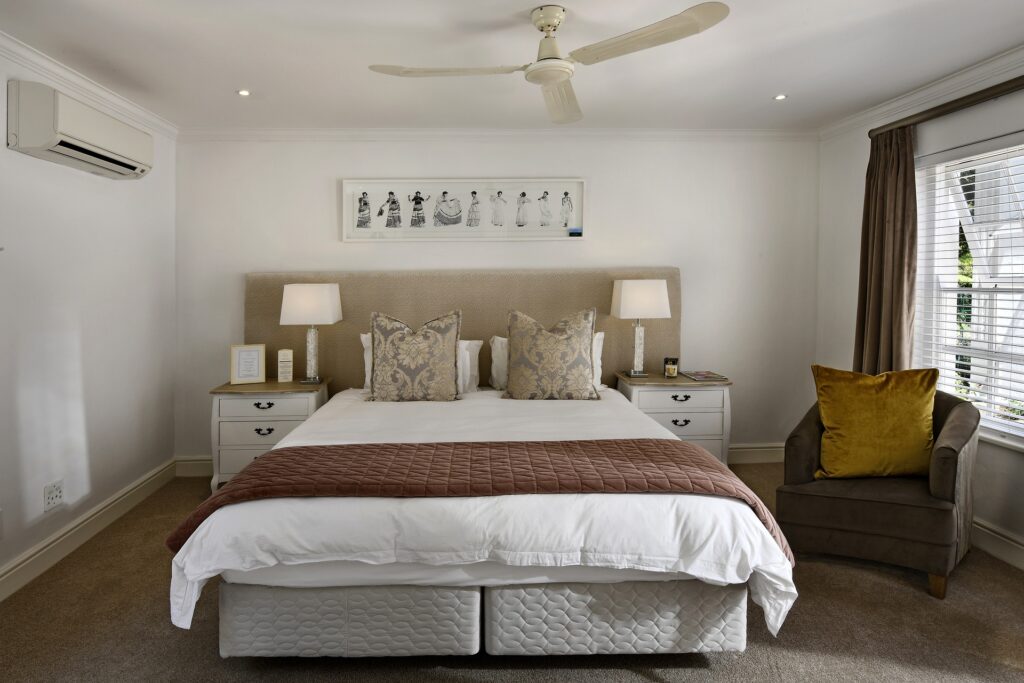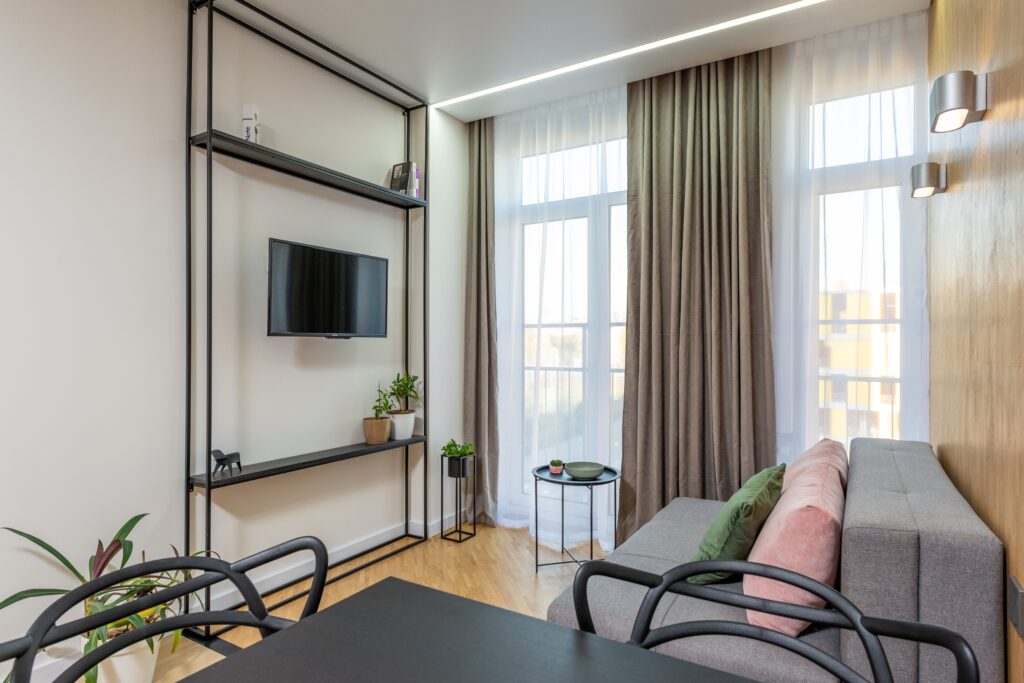introduction
A rollaway bed is a portable bed that is designed to be folded up and stored when not in use. It typically consists of a metal frame with wheels and a mattress that can be rolled up and stored inside the frame. Rollaway beds are a convenient and practical solution for accommodating overnight guests or providing an extra bed in a small space.
One of the main benefits of a rollaway bed is its versatility. Unlike a traditional bed, it can be easily moved from room to room, and it takes up minimal space when not in use. This makes it an ideal option for those who frequently have guests staying over, but don’t have a dedicated guest room.
However, it’s important to note that setting up a rollaway bed correctly is crucial for ensuring the safety and comfort of the person sleeping on it. Improperly assembled or used rollaway beds can pose a risk of injury or discomfort to the sleeper. Therefore, it’s essential to follow the manufacturer’s instructions carefully and make sure that the bed is set up correctly before use. This includes ensuring that the frame is securely locked in place and that the mattress is properly aligned and supported. By taking to rollaway bed setup correctly, you can ensure that your guests have a safe and comfortable sleeping experience.
Table of Contents
rollaway bed setup tools
If you’re in need of an extra sleeping space but don’t have the room for a permanent bed, a rollaway bed can be a great solution. Rollaway beds are versatile, space-saving, and can be easily stored when not in use. But before you can enjoy your new rollaway bed, you’ll need to gather the necessary materials and tools. Here’s a guide to help you get started.
Materials Needed for Setting Up a Rollaway Bed setup
- Rollaway bed frame: The frame is the foundation of your rollaway bed, providing support and stability for the mattress. Look for a frame that’s sturdy, lightweight, and easy to fold.
- Rollaway mattress: The mattress is the most important part of your rollaway bed, as it’s where you’ll be sleeping. Choose a comfortable, supportive mattress that’s the right size for your frame.
- Bedding: You’ll need bedding to make your rollaway bed cozy and inviting. This includes sheets, blankets, and pillows. Choose bedding that’s soft, breathable, and easy to wash.
- Mattress pad: A mattress pad can add an extra layer of comfort to your rollaway mattress. It can also protect the mattress from spills, stains, and wear.
- Pillows: Pillows are essential for a good night’s sleep. Choose pillows that are comfortable and supportive, and that match your bedding.
Tools Needed for Rollaway Bed setup

- Wrench: A wrench can be used to tighten bolts and screws on the bed frame. Look for a wrench that’s the right size for your bed frame.
- Screwdriver: A screwdriver can be used to tighten screws on the bed frame. Look for a screwdriver that’s the right size for your bed frame.
- Pliers: Pliers can be used to grip and manipulate small parts on the bed frame. Look for pliers that are sturdy and easy to grip.
- Allen wrench: An Allen wrench can be used to tighten bolts and screws that have hexagonal sockets. Look for an Allen wrench that’s the right size for your bed frame.
- Hammer: A hammer can be used to tap small parts into place on the bed frame. Look for a hammer that’s lightweight and easy to grip.
Setting up a rollaway bed can be a simple and straightforward process as long as you have the right materials and tools. By following these guidelines, you’ll be able to create a comfortable and cozy sleeping space that you can use whenever you need it.
Unfold the frame
Unfolding the frame is the first step in setting up a rollaway bed. The frame provides the foundation for the mattress and is essential for ensuring a comfortable and safe sleeping experience. In this article, we’ll provide step-by-step instructions for unfolding the frame of a rollaway bed and share tips for ensuring that the frame is fully extended and locked into place.
Step-by-Step Instructions for Unfolding the Frame of a Rollaway Bed
Step 1: Start by finding a clear, open space to set up your rollaway bed. Make sure there’s enough room for the bed frame to fully extend.
Step 2: Unpack the bed frame and lay it flat on the ground with the legs facing up.
Step 3: Locate the locking mechanism on the bed frame. This is typically a metal bar or latch that holds the bed frame in place when it’s folded.
Step 4: Release the locking mechanism by pulling or pushing the bar or latch. This will allow the bed frame to unfold.
Step 5: Grab the top of the bed frame and pull it upwards until it’s fully extended. Make sure that the legs are fully extended and the wheels (if your frame has them) are facing down.
Step 6: Listen for a clicking sound, which indicates that the frame is locked into place. If you don’t hear a clicking sound, check to make sure that the locking mechanism is fully disengaged and try again.
Tips for Ensuring that the Frame is Fully Extended and Locked into Place
Check the legs: Before you start setting up the mattress and bedding, double-check that all four legs of the bed frame are fully extended and touching the ground. If any of the legs are wobbly or uneven, adjust them until the bed frame is stable.
Test the stability: After you’ve set up the mattress and bedding, test the stability of the bed frame by gently pushing on the corners and sides. The bed frame should feel sturdy and not wobble or move around excessively.
Verify the locking mechanism: Check that the locking mechanism is fully disengaged before you try to unfold the bed frame. Once the bed frame is fully extended, listen for a clicking sound or verify that the locking mechanism is fully engaged to ensure that the bed frame is securely locked in place.
In conclusion, unfolding the frame of a rollaway bed is a straightforward process that can be easily accomplished by following these step-by-step instructions and tips. By ensuring that the bed frame is fully extended and locked into place, you’ll be able to create a safe, stable, and comfortable sleeping space that you can use whenever you need it.
Attach the mattress

Attaching the mattress to the frame is the next step in setting up a rollaway bed. The mattress provides the comfort and support for a good night’s sleep, so it’s important to ensure that it’s properly aligned and secured to the frame. In this article, we’ll provide step-by-step instructions for attaching the mattress to the frame of a rollaway bed and share tips for ensuring that the mattress is properly aligned and secured.
Instructions for Attaching the Mattress to the Frame of a Rollaway Bed setup
Step 1: Before you start, make sure that the bed frame is fully extended and locked into place.
Step 2: Lay the mattress on top of the bed frame, making sure that it’s centered and aligned with the edges of the bed frame.
Step 3: Adjust the position of the mattress as needed, so that it’s evenly distributed and centered on the bed frame.
Step 4: Secure the mattress to the bed frame using the straps or hooks that are provided with the bed. If your bed doesn’t come with straps or hooks, you can use bungee cords or rope to secure the mattress to the frame.
Step 5: Test the stability of the mattress by gently pushing on the corners and sides. The mattress should be securely attached to the bed frame and not slide around or wobble.
Tips for Ensuring that the Mattress is Properly Aligned and Secured to the Frame
- Measure the mattress: Before you buy a rollaway bed frame, make sure that the mattress you plan to use is the right size. The mattress should fit snugly on the bed frame without any gaps or overhang.
- Check the alignment: Before you attach the mattress to the bed frame, make sure that it’s properly aligned with the edges of the bed frame. This will help ensure that the mattress is evenly distributed and won’t slide around.
- Use secure straps or hooks: Check that the straps or hooks provided with the bed are strong and durable enough to securely attach the mattress to the bed frame. If you’re using your own straps or rope, make sure that they’re tight and won’t loosen or come undone during use.
- Test the stability: After you’ve attached the mattress to the bed frame, test the stability by gently pushing on the corners and sides. If the mattress slides or wobbles, adjust the straps or hooks until it’s securely attached.
In conclusion, attaching the mattress to the frame of a rollaway bed is an important step in setting up a comfortable and safe sleeping space. By following these step-by-step instructions and tips, you’ll be able to ensure that the mattress is properly aligned and secured to the frame, providing a stable and comfortable surface for a good night’s sleep.
Add bedding and accessories

Once the frame and mattress of the rollaway bed are properly set up, it’s time to add bedding and accessories to make it comfortable and inviting. In this article, we’ll provide suggestions for adding bedding, such as sheets and blankets, to the rollaway bed, as well as tips for selecting and arranging pillows and other accessories to create a cozy sleeping space.
Suggestions for Adding Bedding to the Rollaway Bed
Step 1: Start with a fitted sheet that fits the size of the rollaway bed. Tuck the sheet tightly around the mattress to ensure a smooth, wrinkle-free surface for sleeping.
Step 2: Add a flat sheet and blankets to the bed, layering them for warmth and comfort. You can use a lightweight blanket or quilt for warmer weather, or a thicker comforter or duvet for colder temperatures.
Step 3: Use pillows to add comfort and support to the bed. Place two standard pillows at the head of the bed, followed by two decorative pillows for a touch of style.
Tips for Selecting and Arranging Pillows and Other Accessories
- Choose the right pillows: Pillows are essential for creating a comfortable sleeping environment. Choose pillows that are the right size and firmness for your sleeping position. If you’re a side sleeper, you’ll need a firmer pillow to support your neck and spine. If you sleep on your back, a softer pillow will provide better support.
- Use decorative pillows for style: Decorative pillows can add a pop of color and style to the rollaway bed. Choose pillows that complement the color and design of the bedding, or select a few bold accent pillows to create a focal point.
- Add a throw blanket: A cozy throw blanket can add warmth and comfort to the rollaway bed. Drape the blanket over the foot of the bed or fold it neatly at the end of the mattress.
- Consider a bed tray: A bed tray can be a useful accessory for holding books, snacks, or a laptop while you’re in bed. Choose a tray that’s sturdy and has enough space for all your essentials.
- Add ambient lighting: Soft lighting can create a relaxing atmosphere in the bedroom. Consider adding a table lamp or string lights to the rollaway bed area for a warm and inviting glow.
In conclusion, adding bedding and accessories to a rollaway bed can transform it into a comfortable and stylish sleeping space. By following these suggestions and tips, you can create a cozy and inviting environment for a good night’s sleep.
Test the rollaway bed
After setting up and adding bedding to the rollaway bed, it’s important to test it out to ensure that it is stable and comfortable. In this article, we’ll provide instructions for testing the rollaway bed setup and tips for making adjustments if necessary.
Instructions for Testing the Rollaway Bed
Step 1: Lie down on the rollaway bed and test it for stability. Move around and shift your weight to ensure that the bed does not wobble or tip over.
Step 2: Check the level of the bed. If the bed is not level, adjust the legs of the frame until it is.
Step 3: Check for any squeaks or noises when you move around on the bed. If you hear any noises, tighten the screws or bolts that hold the frame together.
Step 4: Check the mattress for any bumps or lumps. If you feel any unevenness, adjust the mattress to ensure that it is evenly distributed on the frame.
Step 5: Test the rollaway bed for comfort. Lie down in your preferred sleeping position and see if the mattress provides the right amount of support for your body.
Tips for Making Adjustments
Step 1: Tighten screws and bolts: If you notice any wobbling or squeaking, it may be due to loose screws or bolts. Tighten them with a wrench or screwdriver to ensure that the frame is secure.
Step 2: Adjust the legs: If the bed is not level, adjust the legs of the frame until it is. Use a spirit level to ensure that the bed is level from all angles.
Step 3: Check the mattress: If the mattress feels uneven, adjust it by shifting it around on the frame. If the mattress is too soft or too firm, consider adding a mattress topper or replacing the mattress altogether.
Step 4: Test for comfort: If the rollaway bed is not comfortable, consider adding more pillows or a thicker comforter to provide more support and warmth.
In conclusion, testing the rollaway bed setup is an important step to ensure that it is stable and comfortable for a good night’s sleep. By following these instructions and tips for making adjustments if necessary, you can enjoy a comfortable and restful night’s sleep on your rollaway bed.
Conclusion
In conclusion, setting up a rollaway bed involves several steps that are crucial for ensuring a safe and comfortable sleeping experience. Here’s a recap of the steps involved:
Step 1: Gather materials and tools required for assembling the rollaway bed, including the frame, mattress, bedding, and tools such as a wrench and screwdriver.
Step 2: Unfold the frame carefully and ensure that it is fully extended and locked into place.
Step 3: Attach the mattress to the frame, making sure it is properly aligned and secured.
Step 4: Add bedding and accessories to the rollaway bed, including sheets, blankets, and pillows.
Step 5: Test the rollaway bed for stability and comfort, making necessary adjustments such as tightening screws or adjusting the legs of the frame.
It’s important to follow these steps carefully to ensure a safe and comfortable sleeping experience. Skipping any steps or rushing through the process can result in an unstable or uncomfortable bed, which can be hazardous to your health and safety.
Furthermore, it’s important to note that rollaway beds are temporary solutions and are not designed for long-term use. They are great for occasional use, but they are not suitable for everyday use. Make sure to store the bed properly when not in use to prolong its lifespan.
In summary, setting up a rollaway bed is a simple process that involves a few essential steps. By following these steps carefully and taking necessary precautions, you can enjoy a comfortable and restful night’s sleep on your rollaway bed.


